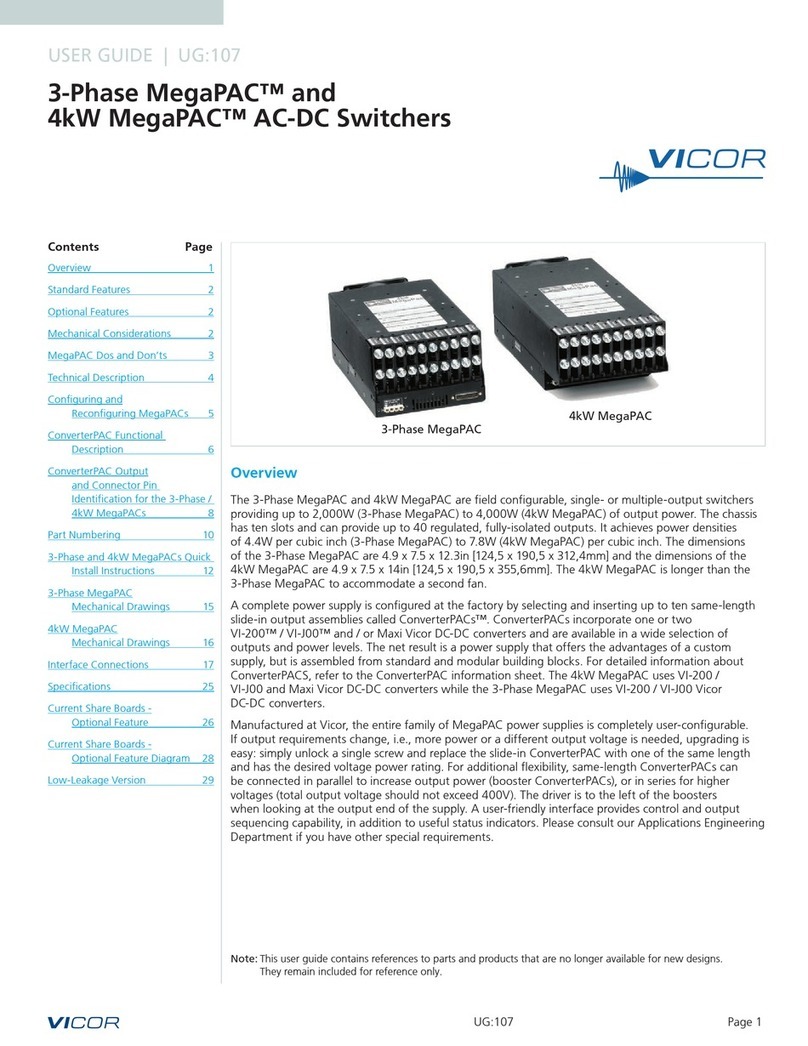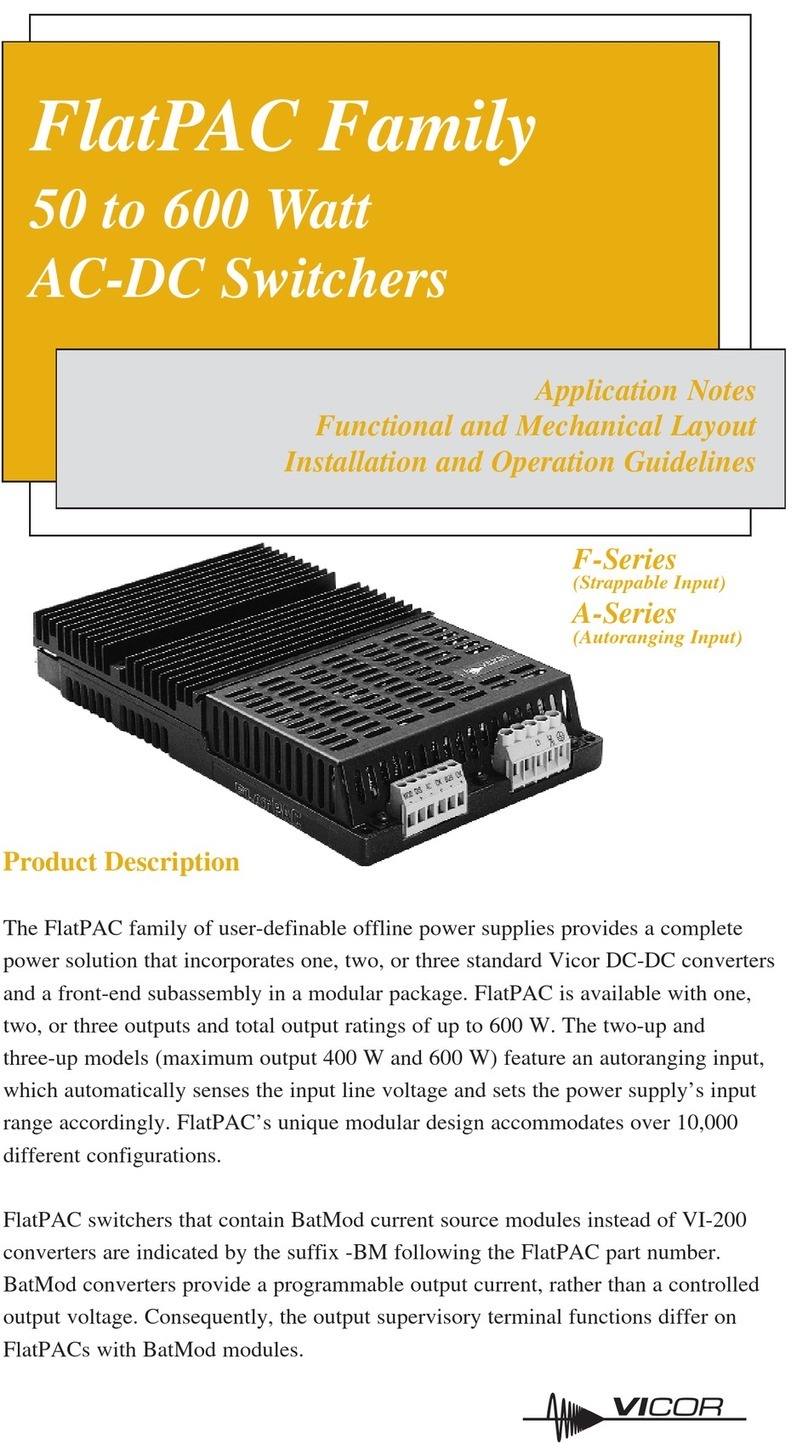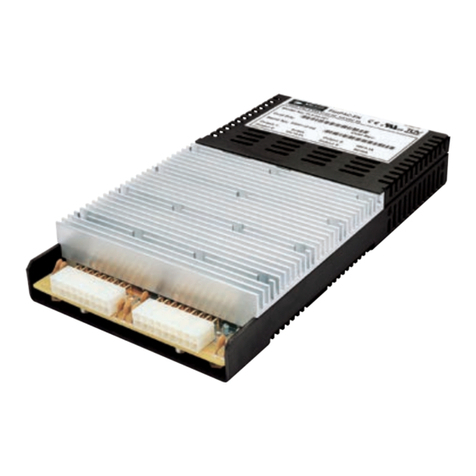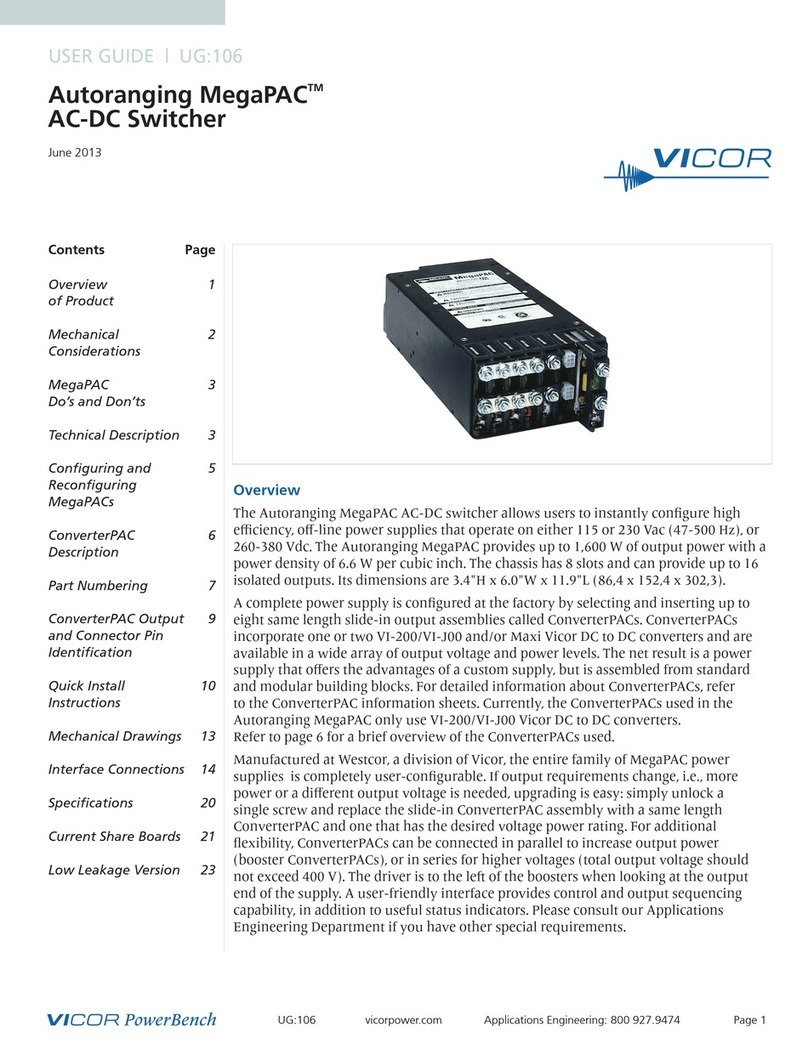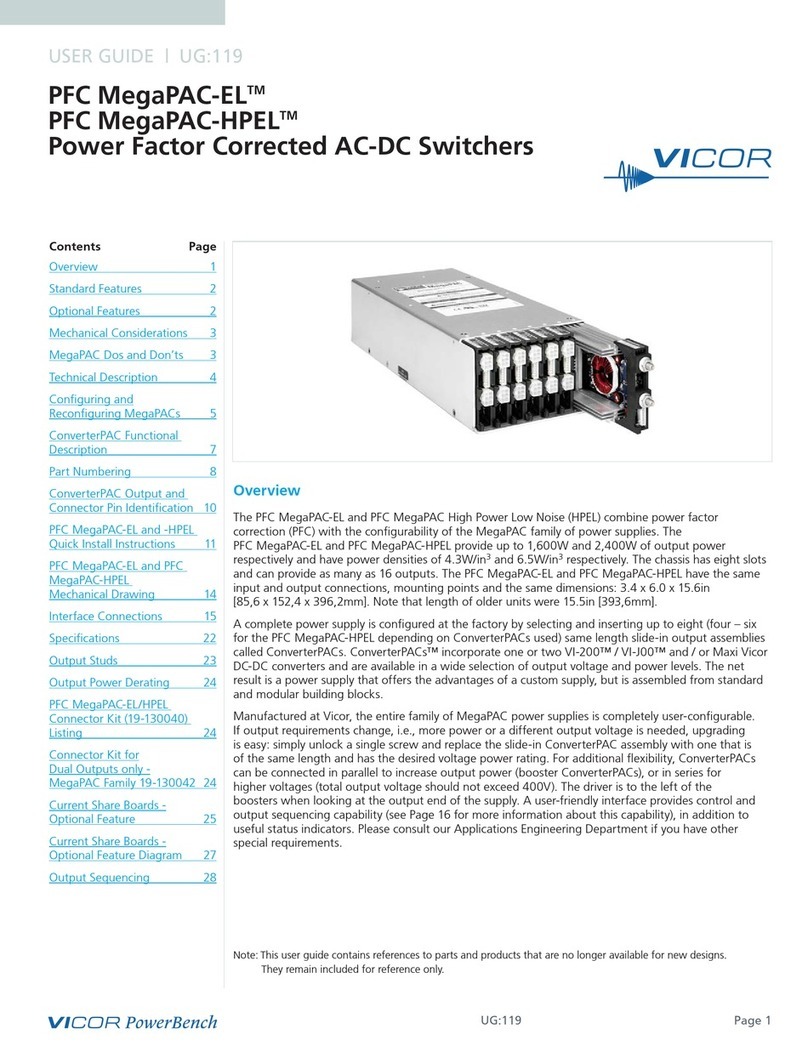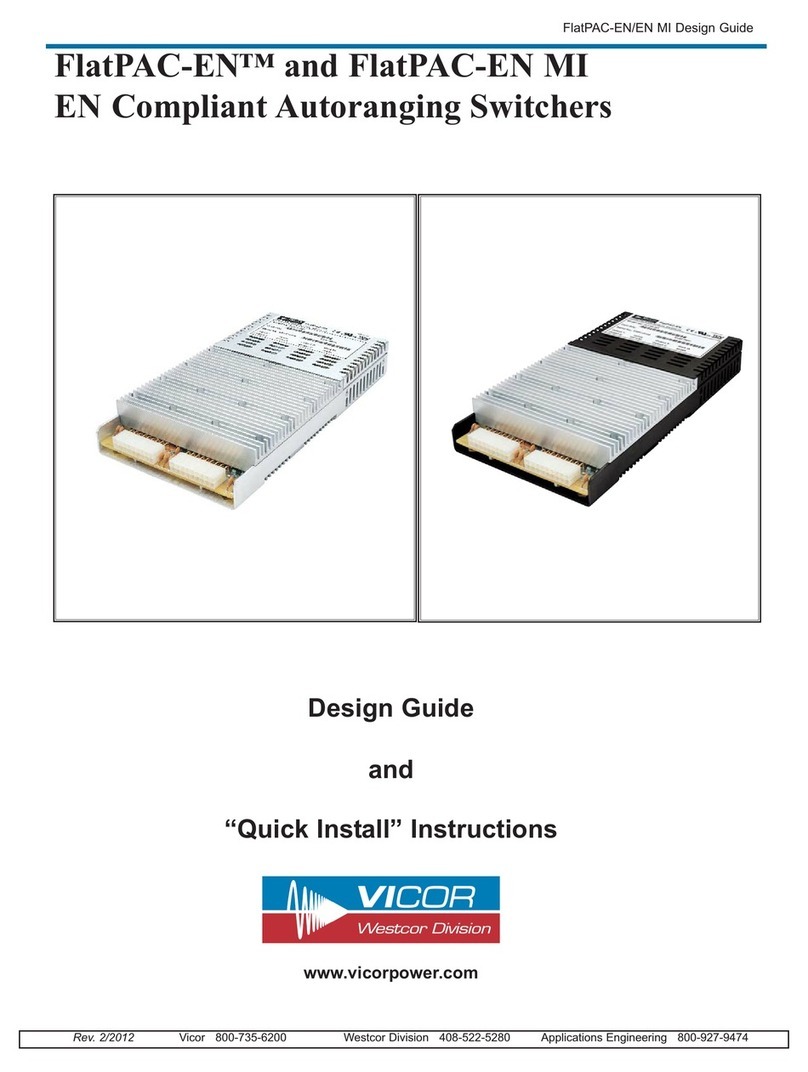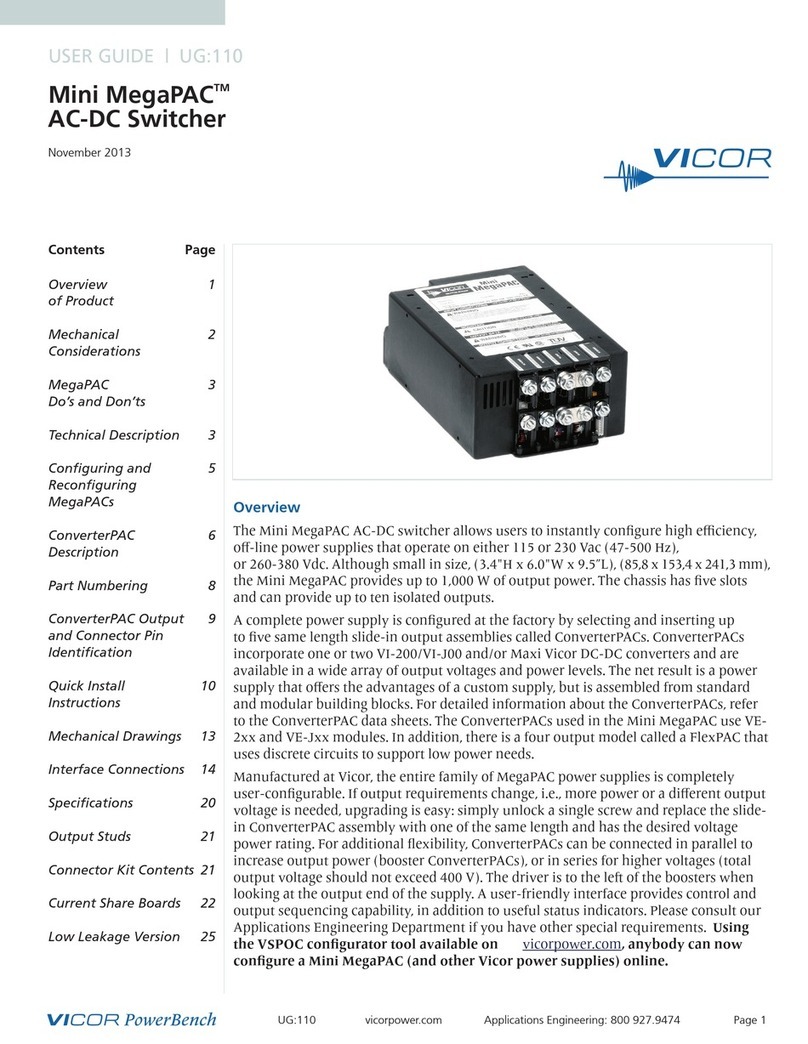
UG:115 Page 8
Sense Connections
Note: PFC Mini™ units built after 12/2000 have been equipped with a feature called Autosense. If no sense
connections are made, the PFC Mini will automatically operate in local-sense mode. If remote-sense connections are
made, the PFC Mini will operate in a remote-sense mode.
For units built before 12/2000 (units without Autosense), Sense connections must ALWAYS be made.
Not connecting Sense Lines to their respective outputs can cause failure to the unit.
Sense connections on output connections with studs
PFC Minis are currently shipped with Autosense installed. Those without the Autosense were shipped
with local sense installed. (See note on Page 13)
If remote sense is desired, remove jumpers MBJ1 and J3, located behind the sense connector.
Connector pin SxJ2-2 is the +SENSE and SxJ2-3 is the –SENSE.
Use Molex mating receptacle #50-57-9403 with #16-02-0103 terminals.
Attach terminals to 20 – 22AWG stranded twisted pair wire using Molex tool #11-01-0208.
Attach opposite end of sense lines to point where regulation is desired.
Verify that sense lines are not cross-connected.
Sense connections on output connection with Molex connectors
PFC Minis are currently shipped with Autosense installed. Those without the Autosense were shipped
with local sense installed. (See note on Page 13)
If remote sense is desired, remove jumpers on MBJ1 and J3, located on either side
of the output connector.
Connector pin SxJ1-4 is the +SENSE and SxJ1-5 is the –SENSE for output #1.
SxJ1-13 is the +SENSE and SxJ1-15 is the –SENSE for output #2.
Use Molex mating receptacle #39-01-2180 with #39-00-0039 terminals.
Attach 18 – 24AWG stranded twisted pair wire using Molex tool #11-01-0197.
Trim Connections
Trim connections on outputs with studs:
SxJ2-1 provides trim access.
Use Molex mating receptacle #50-57-9403 with #16-02-0103 terminals.
Attach 20 – 22AWG stranded wire using Molex tool #11-01-0208.
Trim connections on outputs with Molex connectors:
SxJ1-14 provides trim access for output #1, and SxJ1-6 provides trim access for output #2.
Use Molex mating receptacle #39-01-21 with #39-00-0039 terminals.
Attach 18 – 24AWG stranded wire using Molex tool #11-01-0197.
Interface Connections
J3-1 to 3 are Enable/Disable for cards 1-3, respectively.
J3-4 is Signal Ground, J3-5 is +5V, J3-6 is AC Power OK, and J3-7 is General Shutdown.
Use mating receptacle AMP P/N 205204-4 with terminals AMP P/N 66506-9.
Attach terminals to 18 – 24AWG stranded wire.
Remove jumpers for
Remote Sense
Remove jumpers for
Remote Sense on
Output # 1
Remove jumpers for
Remote Sense on
Output # 2
Connector J2
1
2
3
Trim Pin Access
+SENSE
–SENSE
Pin
SxJ2
J3-9 SPARE
J3 INTERFACE PIN OUT
J3-1
J3-2
J3-3
J3-4
J3-5
J3-6
J3-7
J3-8
E/D-1
E/D-2
E/D-3
SIGNAL GROUND
VCC +5V 300mA
ACOK AC POWER OK
GSD GENERAL SHUTDOWN
SPARE
J3 INTERFACE CONNECTION
MATING HDWR:
HOUSING: AMP P/N 205204-4
SCREW LOCK: AMP P/N 205980-4
TERMINALS: AMP P/N 66506-9
CRIMP TOOL: AMP 58448-3
SxJ1 Dual Output connector
T
T
+S
12
3
45
67
8
9
10
1112
13
14
15161718
+
-
-
-S
+
+-
++-
+S
-S+-
-
M1 Output
M2 Output
Locking Key
Pin 1 Identifier


